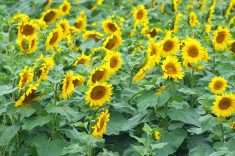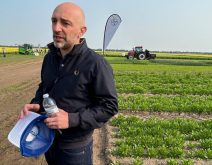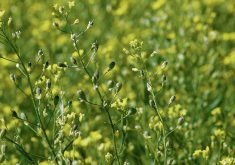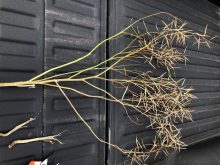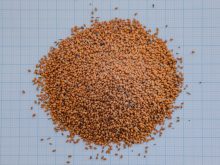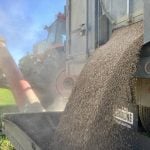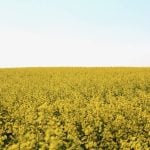As western Canadian farmers consider cropping plans for 2023, they may want to give some thought to growing camelina. It is a crop name from the past that is making a comeback and by all accounts there is strong market demand.
Camelina was somewhat of a flash in the pan 15 or more years ago, but it is regaining credibility as a relatively low-input oilseed crop. It does well under dry growing conditions and very well with some moisture, and it doesn’t seem to be affected by many common crop diseases and pests. Camelina also needs moderate fertility, it’s relatively easy to seed and to harvest, and with processors and markets looking for camelina today, it has potential to deliver a decent net return per acre.
After a somewhat disappointing experience for farmers in the early 2000s, it’s a crop that must earn grower trust. A good recommendation for farmers interested in the crop: contact processors about contracting opportunities (see contact information at bottom) and try growing a quarter section or so in 2023 and see how it does.
Read Also

Claas brings 1000 Series SP forage harvesters to Canada
In mid-August, Claas unveiled its new line of Jaguar forage harvesters at an event in Visalia, California, deep in the heart of that state’s dairy region.
While there is a lot of interest in camelina production now across North America to produce an oil that can be used in the biofuel industry, processors have also shown it is not just a one-trick oilseed. With oil high in omega-3 fatty acids, camelina does have a good fit as a healthy vegetable oil, it can be used as a supplement for horses and companion animals and in aquaculture diets, and it produces a byproduct meal with a good fit in poultry and livestock rations. Camelina is a very versatile oilseed crop.
Opportunities for growers
Southern Alberta farmer Ryan Mercer is one producer excited about opportunities for growing camelina. Mercer, owner of Mercer Seeds Ltd. just south of Lethbridge, was among those interested in camelina 15 or more years ago. That interest ended in a big fizzle for several reasons — a bit of a recession and lack of government support in mandating renewable fuels, for starters.
“But I am really excited about the potential for camelina now,” says Mercer. “Processors are in place, markets are in place, we have new varieties coming along and I’m really excited we also now have some true winter camelina varieties for Western Canada.
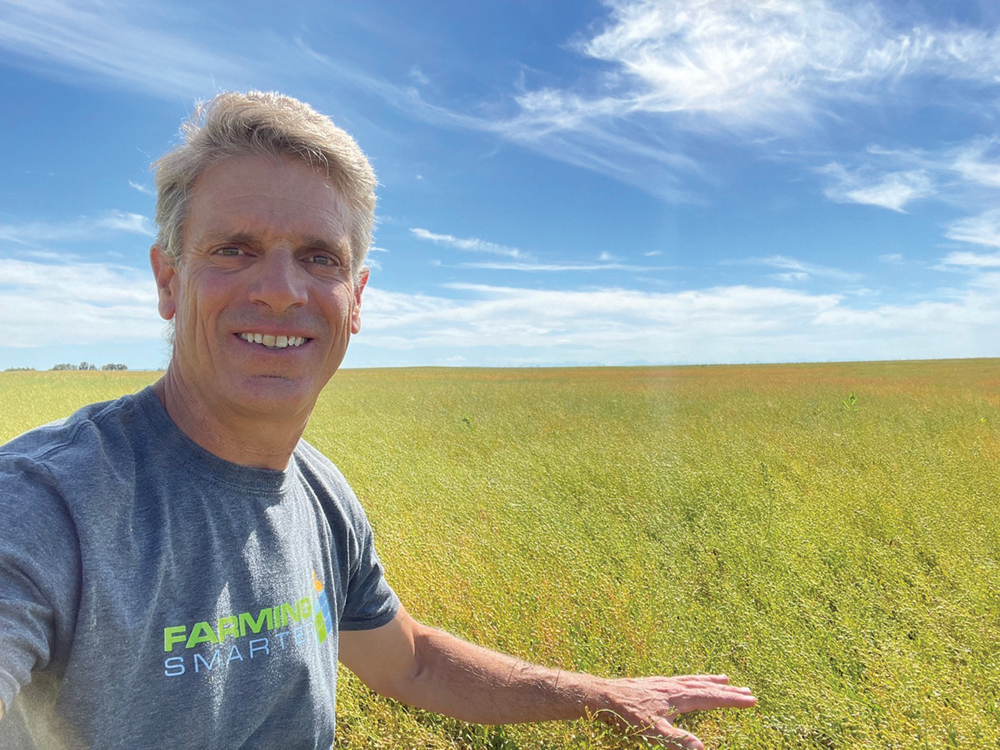
“There are some excellent spring varieties available as well, but these new winter varieties have an excellent fit,” Mercer adds. In his area the best window for seeding camelina is late August to late September. It doesn’t require much moisture to get the shallow-seeded crop to germinate. Camelina can provide good ground cover over the fall and winter, and under dryland growing conditions it is in a good position to take advantage of early spring moisture, helping the crop to optimize yields. While there aren’t many herbicides registered for use with camelina, it is also a competitive crop that can suppress weeds.
Mercer’s experience with growing a winter camelina in 2022 wasn’t exactly a textbook example, but he was still pleased with the results. He was late getting the winter variety seeded in the fall of 2021 — it didn’t happen until October — “so it didn’t have much time to get established before winter,” he says. And the usual early spring moisture didn’t materialize in 2022.
“All things considered, I was amazed at how well the crop did,” says Mercer. He straight combined the crop in early August and was planning to get the 2023 crop seeded during the third week of September.
While camelina is a brassica and a cousin to canola, Mercer says agronomically it is similar to flax. “If farmers have grown flax, I’d say camelina takes about the same amount of fertility.”
Because camelina has a very small seed and there are few herbicide options, it is recommended the crop not be seeded on canola stubble because there would be no way to control volunteer canola or to clean canola from camelina seed.
Camelina is also quite sensitive to herbicide residues, including Group 2 herbicides (particularly the imidazolinones and to a lesser degree the sulfonylureas). Products that have received minor use registration for use with camelina include Edge, a Group 3 herbicide that can be broadcast applied in the fall or before seeding, and Assure II, a Group 1 herbicide for the control of grassy weeds. There are no post-emergence broadleaf herbicide options available for camelina.
While camelina is quite drought tolerant and does well under dry growing conditions, Mercer is looking forward to research trials that involve growing camelina under irrigation.
“I don’t want to see the crop regarded as only a drought-tolerant crop suited to marginal land,” says Mercer. “It has potential to be an excellent performer under a wide range of growing conditions.”
As Mercer Seeds Ltd. gets back into camelina production, it is working closely with two southern Alberta companies also focused on camelina.
U.S.-based Yield10 Bioscience, known in Canada as Yield10 Oilseeds, is an agricultural bioscience company with a facility in Lethbridge that is using genetic technology to develop improved camelina varieties for the production of proprietary seed products. The company says the goal is to develop “superior” varieties of camelina to produce biofuel feedstock oils, bioplastics and omega-3 oils, and then to license yield traits to major seed companies for commercialization in major crops such as corn, soybean and canola.
[RELATED] Alberta Farmer Express: It’s good to be green — canola cleared under new ‘clean fuel’ regulations
On the manufacturing end, over the past couple of years Canary Biofuels has established itself in the Lethbridge area as an oilseed processor with a biofuel refinery, offering southern Alberta farmers production contracts to produce camelina. The biorefinery, which can convert all animal fats as well as fresh and used vegetable oil into biodiesel, has been operating since 2021.
“Now we are in the process of building the crushing plant, which will be operational by early 2023,” says Rick Clark, general manager of oilseeds with Canary Biofuels. The first camelina grown by a few southern Alberta producers this year will be processed starting in the new year. Canary Biofuels, which is a local, Canadian-owned and operated, fully integrated company, also owns another small biofuel refinery and tank farm in Stockton, Calif.
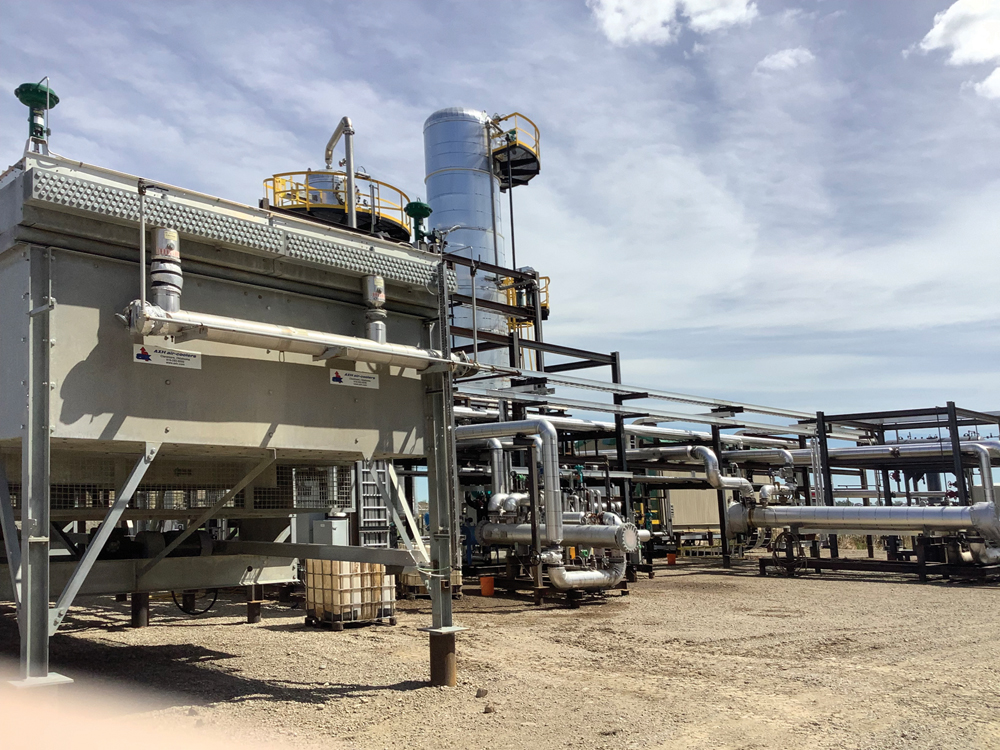
“As part of the renewable fuels industry, our focus is to support the local agriculture industry,” says Clark, noting camelina has a good fit for the biofuel industry for several reasons. In the drier parts of southern and southeastern Alberta, the drought-tolerant crop can be grown in locations where other oilseeds don’t do as well.
Also, because it is a lower input crop, camelina has a lower carbon intensity score. Carbon intensity is used to measure all greenhouse gas emissions associated with the production, distribution and consumption of a fuel, and a low score makes camelina a very environmentally friendly crop to produce.
“And we really like the fact that camelina has both spring and winter varieties, which will stagger the oilseed delivery times during the year,” Clark says.
When there was interest in camelina production 15 years ago, farmers started growing the crop before markets were in place.
“The cart was before the horse in those days,” says Clark. “Now today, Canary Biofuels is the horse. The market is there, the demand is there, we just need farmers to start growing camelina.”
As the company looks at contracting for 2023, Clark says camelina can provide farmers with an excellent net return per acre. Exact figures will vary from farm to farm, but he says even under some of the driest growing conditions, it is not unreasonable to see the crop produce a $100 net return per acre, with much higher returns under higher moisture regimes.
Clark says Canary Biofuels needs camelina acres. The crushing plant has capacity to process 60,000 tonnes of oilseed per year, which works out to delivery of four Super B trucks per day. For 2023, the company is offering production contracts with the primary drawing area being within a 160-kilometre radius of Lethbridge, although they do some contracting outside of the area as well.
The Saskatchewan experience
Smart Earth Camelina Corp. based in Saskatoon has weathered the ups and downs of oilseed and energy markets over the past 17 years, and has developed its own market opportunities for camelina oil, meal and related products. That company is also offering farmers across Western Canada production contracts to grow camelina.
After the initial excitement in the early 2000s about using camelina oil for biofuel production, Smart Earth Camelina founder Jack Grushcow focused his attention on developing other markets for the oil and meal.
Smart Earth has developed long-term markets for high-quality meal and oil for animal feed and aquaculture, as well as for culinary or table oil use. The company also produces camelina oil supplements for canine and equine markets with anti-inflammatory benefits to improve overall animal health. Independent feeding trials have also approved the use of camelina meal in poultry rations, and the final phase of feeding trials is underway for the use of meal in dairy rations.
While using camelina for the biofuel industry is back in the news again, “it is a crop with wide-ranging market opportunities,” says Carlene Sarvas, production lead with Smart Earth Camelina.

Over the past 17 years, along with its own market development, the company has carried on a camelina breeding program to develop new varieties not only with improved yield but with improved quality and agronomic characteristics.
“We now have a variety, NewGold HT, that has resistance to Group 2 herbicides, opening up opportunities for in-crop weed control,” says Sarvas. The Smart Earth breeding program has also increased the size of camelina seed in some varieties by about 40 per cent, making it easier to handle through seeding equipment. Also, with the plumper seed, the crop can be seeded slightly deeper, with plenty of vigour and energy for more even germination and emergence.
“We have developed several new spring varieties over the years and now we are also working on developing true winter camelina varieties,” says Sarvas. “They are still in the pipeline and a few years away, but we hope to transfer many of the quality and agronomic characteristics in the spring varieties into the new winter varieties.”
As markets grow, Smart Earth is hoping to contract up to 10,000 acres of camelina for 2023. The company is offering production contracts with an Act of God clause to Saskatchewan, Manitoba and Alberta producers this fall and winter.
On the breeding agenda
Over the past dozen years or so, interest in camelina in Canada has focused on making use of the high-quality healthy oil and high-protein meal for food and feed applications, but now there is growing interest in camelina for use as a biofuel.
Christina Eynck heads the specialty crop breeding program with Agriculture and Agri-Food Canada (AAFC) in Saskatoon. She says changes in government biofuel policies in North America in recent years have renewed interest in camelina as a feedstock for the biofuel industry.
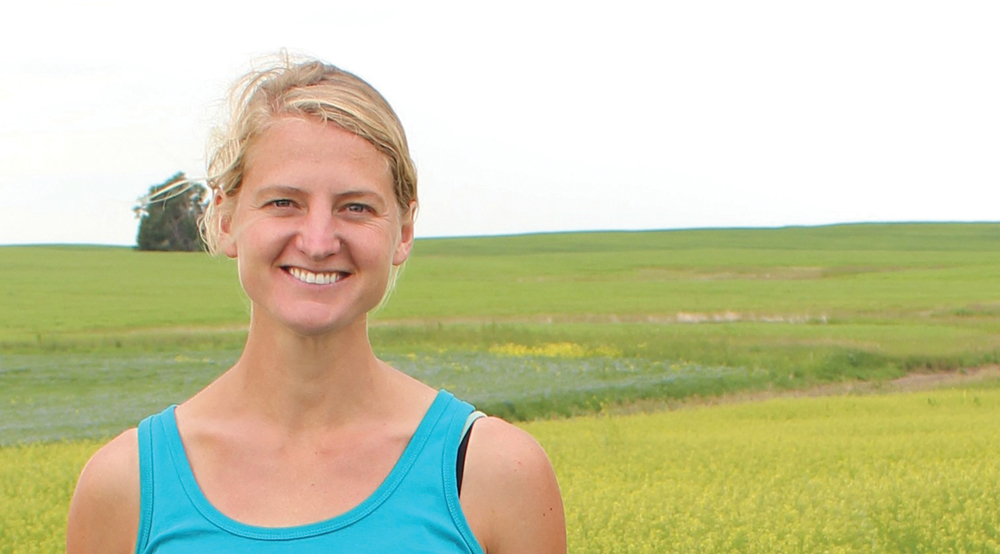
Eynck, who worked on the Smart Earth camelina breeding program before joining AAFC in 2017, notes there is always room for improvement among camelina varieties.
“We are working to improve camelina quality and agronomic traits on several fronts,” says Eynck. “Our program mostly involves development of spring varieties, but we are working on winter camelina varieties as well.”
Camelina breeding objectives include increasing crop yield as well as seed size. Weight of the small-seed crop is similar to alfalfa and is about 1.2 grams per 1,000 seeds. If breeders can increase seed size by 40 to 50 per cent, it would mean farmers could seed the crop deeper than the current recommendation of one-quarter inches deep.
Seeding slightly deeper would help with stand establishment and reduce the amount of seed that might be blown out the back end of the combine at harvest. Larger seed size would also help increase oil content.
Other breeding objectives include developing camelina varieties with resistance to downy mildew and other traits such as improved standability and improved Group 2 herbicide tolerance for in-crop weed control. Camelina is now particularly sensitive to Group 2 herbicide carry-over in the soil.
“We are working to improve a number of quality and agronomic characteristics,” says Eynck. “There are several improved lines in the pipeline, so hopefully over the next couple of years there will be new varieties brought forward for registration.”
The United States wants camelina
Montana-based Sustainable Oils has been involved with camelina production in the United States since 2005. Over the last couple of years, the company has put out the call to farmers across northern tier states and the U.S. Midwest to grow camelina. The company is not currently looking to source camelina from Western Canada.
Over a wide area of the western United States, “we will take all comers,” says Barney Bernstein, vice-president of sustainable oils for North America and its parent company Global Clean Energy.
“We are encouraging farmers throughout Montana, eastern Colorado and western Kansas to give it a try. We are expanding east and west. Our experience over the past couple of seasons shows farmers are finding it a viable option as a relatively low-input oilseed that grows well under dry growing conditions.”
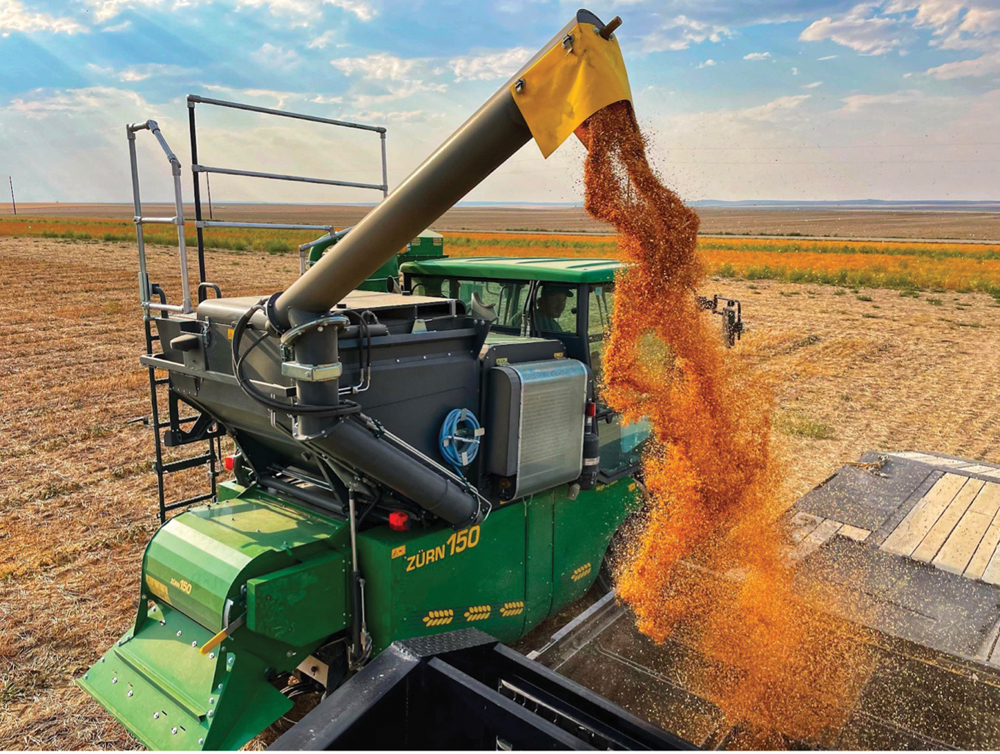
Sustainable Oils is eventually hoping to contract about two million acres of camelina to meet its annual production of 220 million gallons of renewable diesel fuel.
Bernstein describes Sustainable Oils as having the oldest and largest camelina breeding program in the world. This past summer, the company opened new North American headquarters in Great Falls, Mont., complete with plant breeding and research labs. In recent years, Sustainable Oils has released eight patented camelina varieties developed in the United States, while a separate breeding program in Spain has developed 11 new varieties.
Bernstein says the renewable fuel industry experienced about a 10-year lull during the early 2000s as markets didn’t favour investment in renewable energy. Petroleum products were just too cheap. In the last few years, however, especially with government policies favouring renewable energy to meet commitments on climate change and reduced greenhouse gas emissions, renewable energy is back on the front burner.
The opportunity for more farmers to include camelina in the rotation is out there, says Bernstein, pointing to Montana in particular. The most common rotation in Montana is wheat-fallow.
“There is potentially 2.5 million acres of fallow land that could be producing a crop,” he says. “Camelina is a low-input crop with lower water usage that we have seen has yielded very well on as little as two inches of rain.”
With processing and refining facilities in Bakersfield, Calif., Sustainable Oils is a fully integrated company. It develops the varieties, contracts production to farmers, buys back the camelina, and sends it to California where it is processed and the oil refined into renewable diesel fuel. The camelina meal is sold into the livestock feed market.
Bernstein says while camelina already has an excellent fit as a renewable fuel feedstock, key objectives of the breeding programs include ongoing efforts to increase yields and to develop varieties with herbicide tolerance.
Camelina contacts
For farmers interested in learning more about camelina varieties and contracting and marketing opportunities, some of the main players in Western Canada include the following:
- Mercer Seeds Ltd. (mercerseeds.ca) is located in Lethbridge, Alta. Contact Ryan Mercer at 403-308-2297 or [email protected].
- Canary Biofuels (canarybiofuels.com) is located in Lethbridge, Alta. Contact Rick Clark at 403-507-1141 or [email protected].
- Smart Earth Camelina Corp. (smartearthcamelina.ca) is located in Saskatoon, Sask. Contact Carlene Sarvas at 306-220-2737.
- Yield10 Bioscience, ([email protected]) – based in Saskatoon, Sask.
- For US growers interested in camelina, please contact Sustainable Oils (headquartered in Great Falls, MT) at 406-750-2917 or susoils.com/contact.




